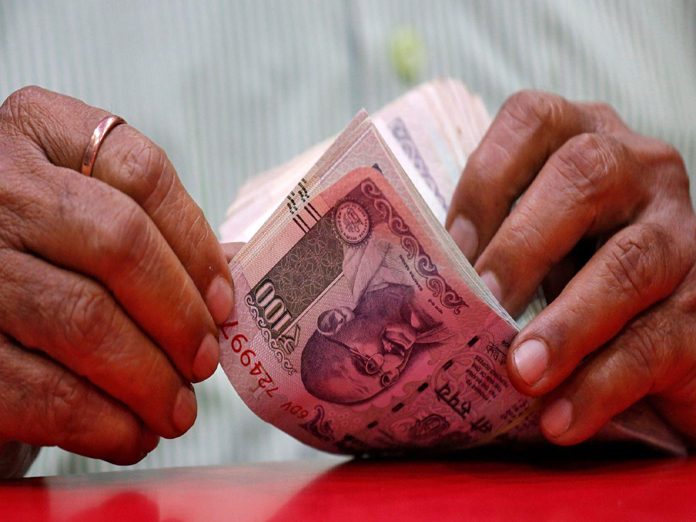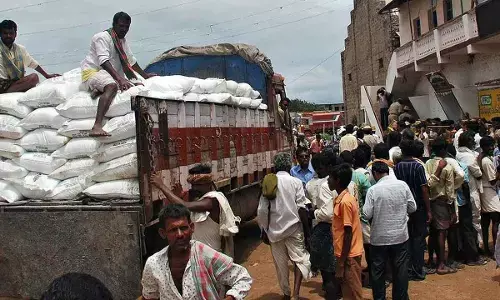Reality check on the fastest economy

Global consulting firm PricewaterhouseCoopers PwC has said that India would become the fifth largest economy of the world in 2019 beating the United Kingdom UK This comes on the top of India being the fastest growing economy in 2108 Kudos for these remarkable achievements
Global consulting firm PricewaterhouseCoopers (PwC) has said that India would become the fifth largest economy of the world in 2019 beating the United Kingdom (UK). This comes on the top of India being the fastest growing economy in 2108. Kudos for these remarkable achievements.
The GDP is considered to be a measure of welfare of the people. However, it can be exactly the opposite. An anomaly of GDP is that it measures “good” as well as “bad” production in the calculation of the GDP. A production of one nuclear warhead costing Rs 100 crore and a production of 4 crore kg of wheat valued at Rs 100 crore add an equal amount to the GDP.
Or, the production of pollution masks and apples adds the same amount to the GDP. Thus, if a person falls sick and spends Rs 2 lakh to have a heart bypass surgery done, the GDP increases by Rs 2 lakh. In other words, GDP measures “consumption” irrespective whether pollution masks are consumed or apples. It appears that India is consuming large amounts of “bad” goods in achieving the high GDP in comparison to the UK.
The UK was ranked at No 6 among 180 countries in the Environment Performance Index made by the World Economic Forum; while India was ranked at No 177. The GDP of UK in 2019 is expected to be about 2,900 billion United States Dollars (USD) while that of India is expected to be about 3,000 billion USD.
This means that while the people of the UK would be consuming about 2,900 Billion USD of apples, the people of India will be consuming 3,000 billion USD of pollution masks. Such consumption can hardly be considered a measure of welfare.
Another point is that the GDP measures the amount of goods produced in the country. It does not measure the amount of goods consumed by the people of India. Our GDP increases even if Hindustan Lever produces soap in India and the profits are repatriated to its parent in the Netherlands.
This is like the poor farmer producing rice which is taken away by the landlord leaving the farmer hungry. The correct measure of the welfare is the Net National Income that is earned by the country after making all the international payments.
According to a press release by the Press Information Bureau, the GDP of India in 2017-18 was expected to be Rs 166 lakh crore whereas the national income was expected to be Rs 147 lakh crore. This means that 19 lakh crore of our production is being sent abroad by companies like Hindustan Lever or by other means.
Now let us look at our growth rate being the fastest. The IMF has estimated the growth rate of India for 2018 at 7.4 percent against 6.6 percent for China in 2017. In order to explain the importance of these figures, allow me to assume that these same rates were applicable for 2017.
The GDP of India in 2017 was 2,597 billion USD. A 7.4 percent increase in this means that we have added 197 billion USD to our GDP in 2017. On the other hand, the GDP of China in 2017 was 12,237 billion USD. A 6.6 percent increase in this means that China added 807 billion USD to her GDP.
It becomes clear that we added 197 billion USD which was less than one-fourth of the 807 billion USD added by China in 2018, yet we were the fastest growing economy. This happens because we are calculating the growth rate on a low base. An example will explain this.
An increase in the daily wage of the manual worker from Rs 300 to Rs 400 translates into 33 percent growth rate. On the other hand, an increase in the income of a businessman from Rs 300 lakh to Rs 330 lakh translates into a 10 percent growth rate.
The increase of Rs 100 in the daily income of the worker becomes 33 percent growth rate even though this is pittance against the 10 percent growth of profits of the businessman. The correct comparison would be between two workers who were both, say, earning Rs 300 per day. One whose income increased to Rs 400 certainly has reasons to celebrate in comparison to another whose income increased, say, to Rs 330.
The conclusion is that comparison of growth rate has to be made between countries at a similar level of income. In early nineties, China was at similar level of income as India is today. At that time China’s growth rate was around 12 percent.
Thus, the proper comparison is between China of 1991 with a 12 percent growth rate and India of 2018ith an 8 percent growth rate. I am not denigrating India becoming the fastest growing economy. However, we must be circumspect that this is only because of the low base on which the growth rate is calculated.
Now let us consider India becoming the fifth largest economy of the world in 2019 after United States, China, Japan and Germany; beating the UK and France. Here we have to look at the size of the population. A much smaller population in the United States, Japan and Germany earns more than a much bigger population of China and India.
This is like comparing the income of Mumbai and Dubai; or comparing the income of a large undivided family and a nuclear family. The correct comparison is between the incomes earned by each person in these countries, which is called “GDP per capita.” The GDP per capita of the UK was 39,800 USD while of India was 1,983 USD in 2017.
Each citizen of India was earning about one-twentieth of the income earned by a citizen of the UK. However, India has a large population. Thus, when multiplied by the number of people, the GDP of India becomes 3,000 billion USD, which would be more than the GDP of the UK.
Our situation is like the one crore citizens of Mumbai shouting aloud that they are earning more than Ratan Tata. I am again not denigrating India becoming the fifth largest economy. However, we must be circumspect that this is only because of our poor but burgeoning population.
Author was formerly Professor of Economics at IIM Bengaluru











